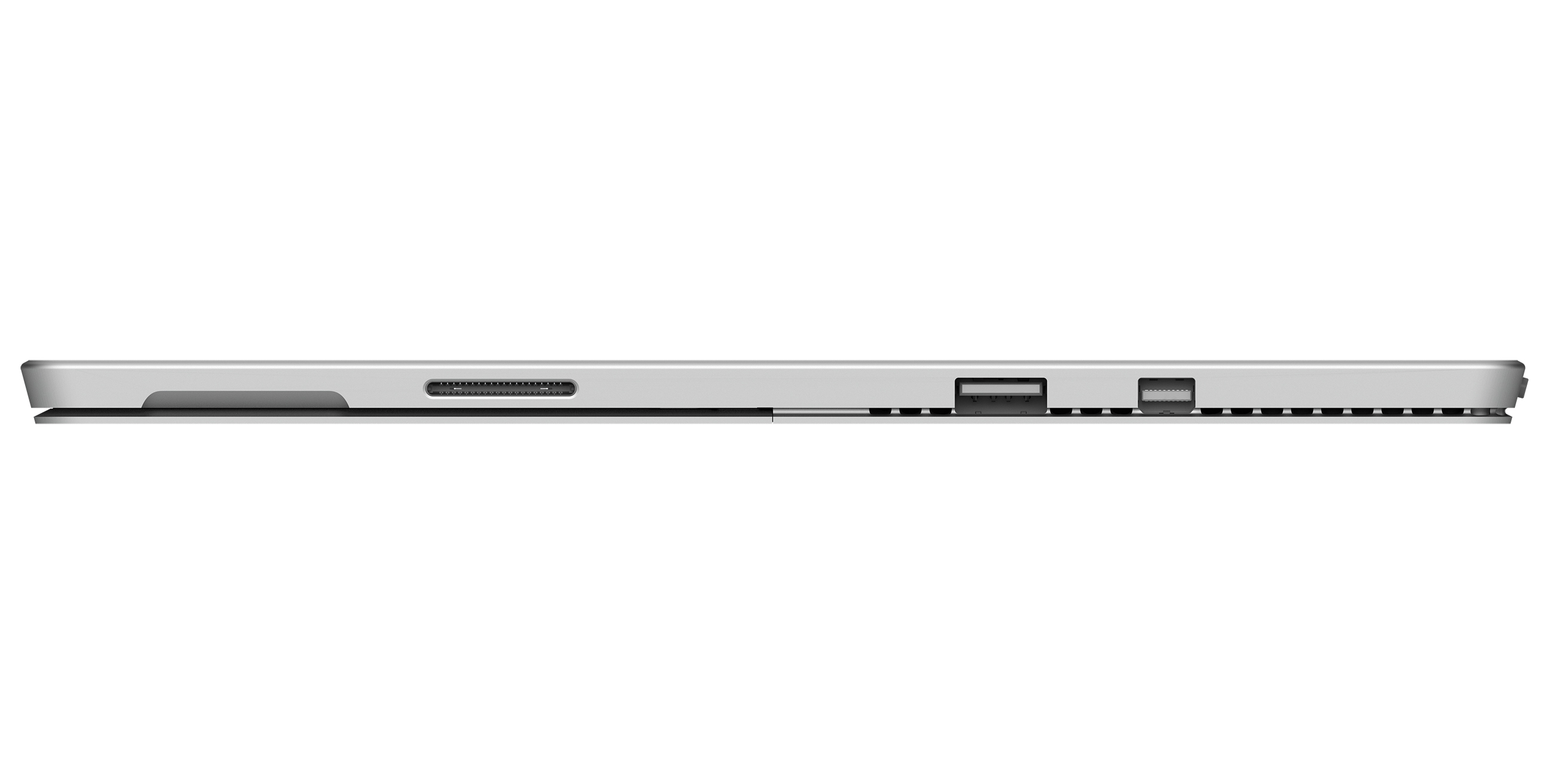Apple iPad Pro 9.7 vs Microsoft Surface Pro 4
It's tablets with keyboards at dawn


Apple surprised most industry watchers when, at its 21 March keynote event, it announced not a much-rumoured iPad Air 3, but a new, down-sized version of the iPad Pro. The new device takes the gubbins from what will henceforth be known as the 12.9-inch iPad Pro, and wraps them in the same physical package as the iPad Air 2: the result is the 9.7-inch iPad Pro.
Apple touts the expanded iPad Pro lineup as both an upgrade for iPad users and a replacement for the PC, but here it's not without competition. Among the many tablets and hybrids hoping to be taken seriously, Microsoft's Surface Pro 4 stands out as a truly viable PC alternative - as we found when we reviewed it. While the iPad Pro 9.7 and Surface Pro 4 may be chasing a similar market, they represent two quite different approaches: here's how they compare on pricing, availability and specification.
Pricing and availability, storage and performance
Microsoft launched the Surface Pro 4 in October 2015, and it's widely available now. The UK range comprises six models, ranging from 624 (749 inc VAT) to a mighty 1,499 (1,799), and while all examples come with the Surface Pen stylus, Microsoft's Type Cover - necessary to properly emulate a laptop - costs a further 92 (110).

All Surface Pro 4 models have Intel's 6th-generation (Skylake) low-voltage dual-core processors, ranging from a Core m3 clocked from 900MHz to 2.2GHz, through to a Core i7 clocked from 2.2 to 3.4GHz. Graphics are handled by the processors' integrated HD515, HD520 and Iris 540 graphics capabilities. Storage is by SSD with capacities from 128-512GB, and the installed memory ranges from 4-16GB.
From the iPad Pro's 31 March launch, there will also be six models available, though the differences here are less substantial making for a simpler line-up. All have the same A9X ARM-based system-on-chip, combining a 2.26GHz dual-core processor and M9 motion co-processor with a 12-core Power VR Series 7XT graphics capability. All models will have 2GB of RAM, but they're available with 32, 128 or 256GB of storage, each capacity available with or without 4G capability. To complicate things, models are available in silver, gold, 'space grey' and 'rose gold'.
Prices vary from 416 (499) for the basic 32GB Wi-Fi model to 699 (839) for the high end 256GB Wi-Fi and 4G variant, but that includes neither the 66 (79) Apple Pencil, nor the 108 (129) Smart Keyboard cover. As with the iPad Pro 12.9, this is only available with a US English layout, which is likely to irritate anyone needing the or symbols, for example.

With the Surface Pro 4 running Windows 10 Pro on a x86 processor and the iPad Pro 9.7 running iOS 9.3.1 on an ARM processor, a direct performance comparison will be very difficult. With the exception of the base Core m3 model, however, it looks as though the Surface Pro 4 has the edge in processing power.
Sign up today and you will receive a free copy of our Future Focus 2025 report - the leading guidance on AI, cybersecurity and other IT challenges as per 700+ senior executives
Battery and screen
The most obvious difference between the two is size and weight - the 12.3in Surface Pro has an extra 2.6 inches of screen to fit in, after all. While we haven't yet had our hands on the iPad Pro 9.7, it looks to use almost exactly the same physical package as the gorgeous iPad Air 2: it measures 240x169.5x6.1mm and weighs just 437 grams. The Surface Pro 4 is similarly beautiful, but measures 292.1x201.4x8.5mm, weighing 766g (Core m3) or 786g (Core i5 and i7).

The Surface Pro 4's excellent 12.3in screen has a resolution of 2,736x1,824, with 267 pixels per inch (ppi). It also has a 3:2 aspect ratio, while the iPad Pro 9.7's 2,048x1,536 Retina display works out at 4:3 and 264ppi. This is essentially the same display as seen on the iPad Air 2, but with a new 'True Tone' feature that alters the brightness and colour bias to match the viewing environment. Apple also claims a 25% increase in brightness over the iPad Air 2, and a new finish that reduces reflections by 40%.
Apple and Microsoft make similar claims for battery life. The 38.2 watt-hour battery in the Surface Pro 4 is claimed to give up to nine hours' video playback, and we previously managed 8.5 in our tests. Apple says that both iPad Pro models are good for 10 hours: again, we managed almost that when we tested the 12.9in model. Although the 9.7in model has a smaller, 27.5Wh battery, we'd expect a similar performance given that it's powering a far smaller screen.

Camera, ports and sensors
Both devices support Bluetooth and Wi-Fi standards up to 802.11ac, but the iPad Pro has a slight edge when it comes to inbuilt sensors. In addition to ambient light, gyro, accelerometer and magnetometer (compass), it has a fingerprint reader, while the 4G-capable models also add GPS.
The reverse is true for ports, where the Surface Pro 4 has a clear advantage. The iPad has only Lightning and headset jacks, with full-size USB and SD adapters for the Lightning port available as optional extras. Microsoft's hybrid has a USB 3.0 port, microSD slot and Mini DisplayPort, and its 'Surface Connect' power port also serves to hook it up with an optional Surface dock offering Gigabit Ethernet and more display and USB ports.

Microsoft makes little of the eight-megapixel rear camera and 5MP front camera on the Surface Pro 4, although the latter pairs with an infrared camera for accurate Windows Hello facial recognition. The iPad Pro 9.7in gets significantly upgraded cameras compared to the 12.9in model, with the 12MP rear camera supporting 4k video at 30fps, or up to 240 frames-per-second slow-motion at 1,280x720 pixels.

Preliminary Conclusions
While they have their similarities, their very different specification and pricing underline that the iPad Pro 9.7 and Surface Pro 4 will appeal to different users. Judging by operating system alone, the newest iPad is certainly going to struggle to deliver on Apple's 'PC replacement' claim: only recently has iOS evolved to support multi-tasking, while Windows 10 is a full desktop OS. More pertinently, our review of the iPad Pro 12.9 found that its huge screen was both its strongest and weakest feature. Only a full review will tell us whether shrinking this has added to the iPad Pro's practicality, or squandered essential screen space for graphics professionals.
After a brief career in corporate IT, Simon Handby combined his love of technology and writing when he made the move to Computer Shopper magazine. As a technology reviewer he's since tested everything from routers and switches, to smart air fryers and doorbells, and covered technology such as EVs, TVs, solar power and the singularity.
During more than 15 years as Shopper's long-time printer reviewer, Simon tried, tested and wrote up literally hundreds of home, small office and workgroup printers. He continues reviewing smart products and printers for a variety of publications, and has been an IT Pro contributor since 2010. Simon is almost never happier than when surrounded by printers and paper, applying his stopwatch and a seasoned eye to find the best performing, best value products for business users.
-
 With the M5 iPad Pro, Apple has finally made a tablet that can replace your laptop
With the M5 iPad Pro, Apple has finally made a tablet that can replace your laptopReviews Still rocking the same design, but inside it's all change – and that is what makes the M5 iPad Pro so good
-
 Apple Event: New MacBook Air, iPad Pro and Mac mini launched
Apple Event: New MacBook Air, iPad Pro and Mac mini launchedNews Apple appeases fans with long-requested hardware refreshes
-
 iPad Pro 10.5 vs Surface Pro head-to-head review
iPad Pro 10.5 vs Surface Pro head-to-head reviewVs Both devices want to be a laptop killer, but which one is worthy of the title?
-

 Apple iPad Pro review: Apple quietly hikes prices of some iPad Pro models
Apple iPad Pro review: Apple quietly hikes prices of some iPad Pro modelsReviews
-
 Apple iPad Pro 9.7 vs iPad Air 2
Apple iPad Pro 9.7 vs iPad Air 2Vs What’s the difference between the new 9.7in iPad and its predecessor?
-

 Apple iPad Pro 9.7 review
Apple iPad Pro 9.7 reviewReviews The iPad Air 3 that also wants to be your laptop
-
 iPad Pro 9.7in vs iPad Pro 12.9in
iPad Pro 9.7in vs iPad Pro 12.9inVs What's the difference between the Apple iPad Pro 9.7 and iPad Pro 12.9?
-
 iPad Pro 9.7: release date, price and specs
iPad Pro 9.7: release date, price and specsIn-depth Apple's 9.7-inch iPad Pro has now begun shipping to users around the world


